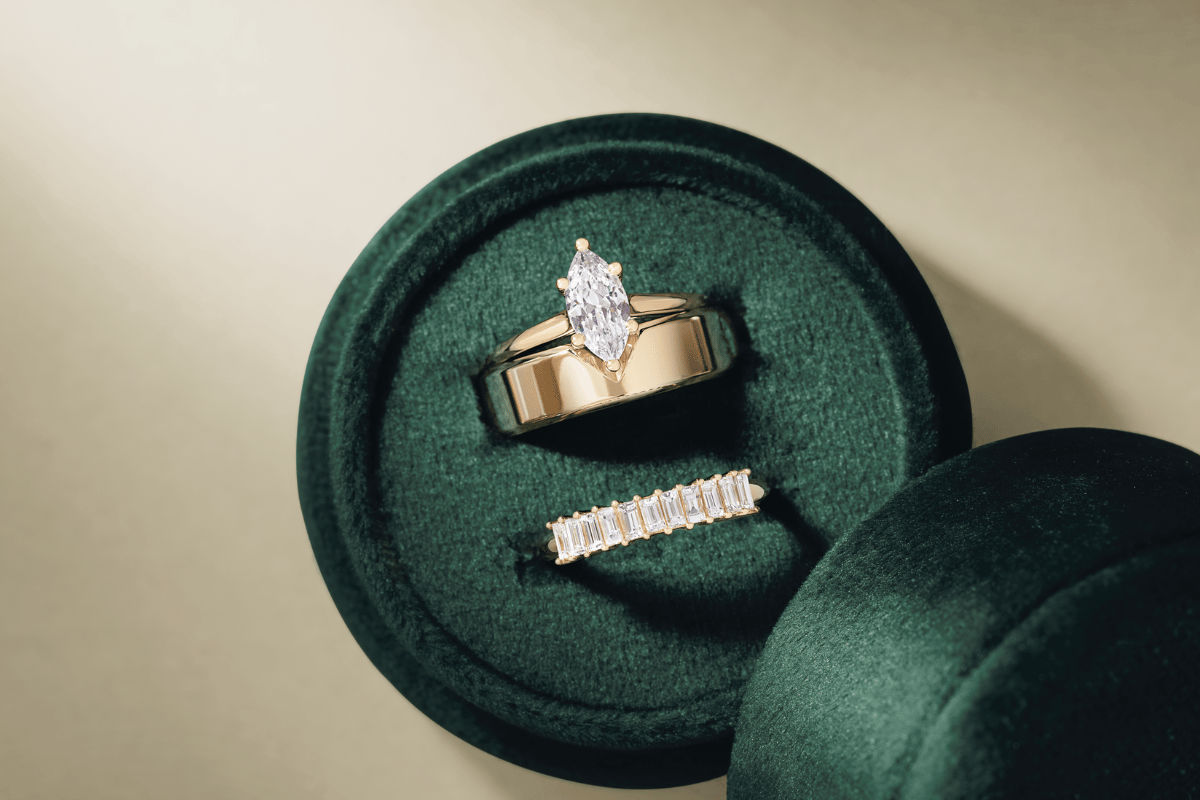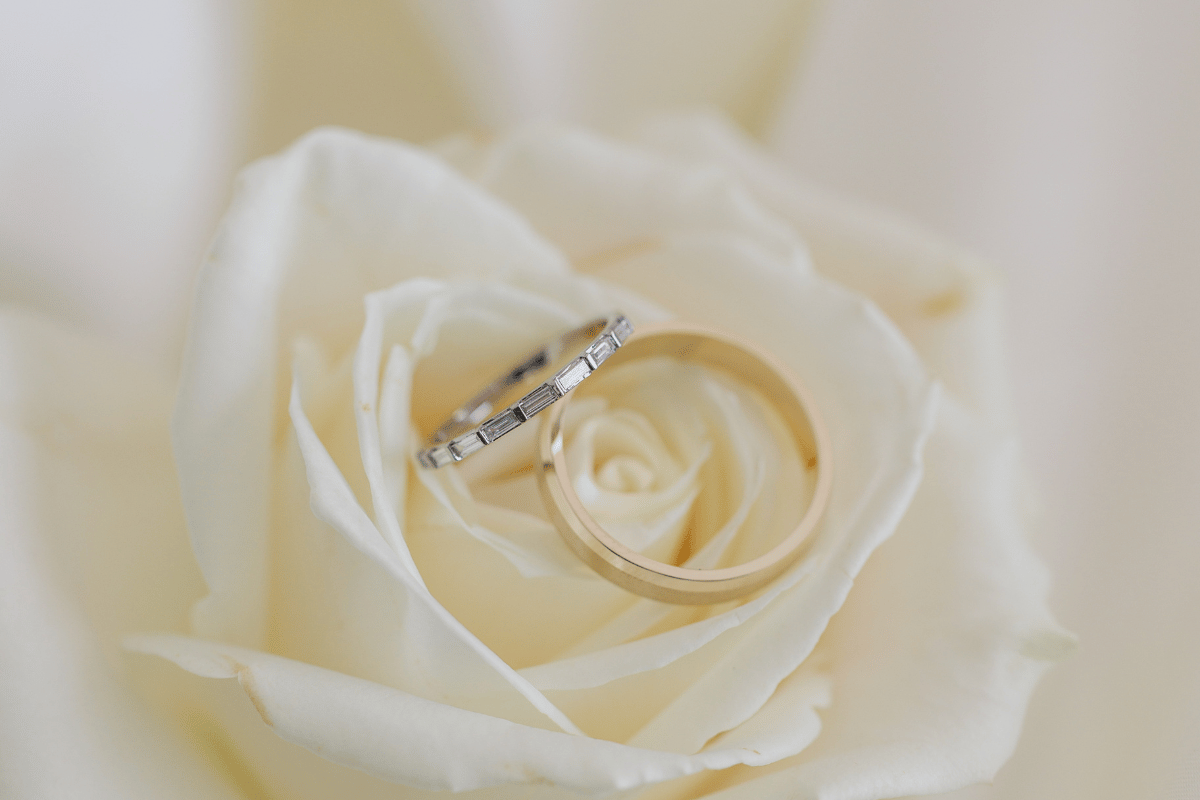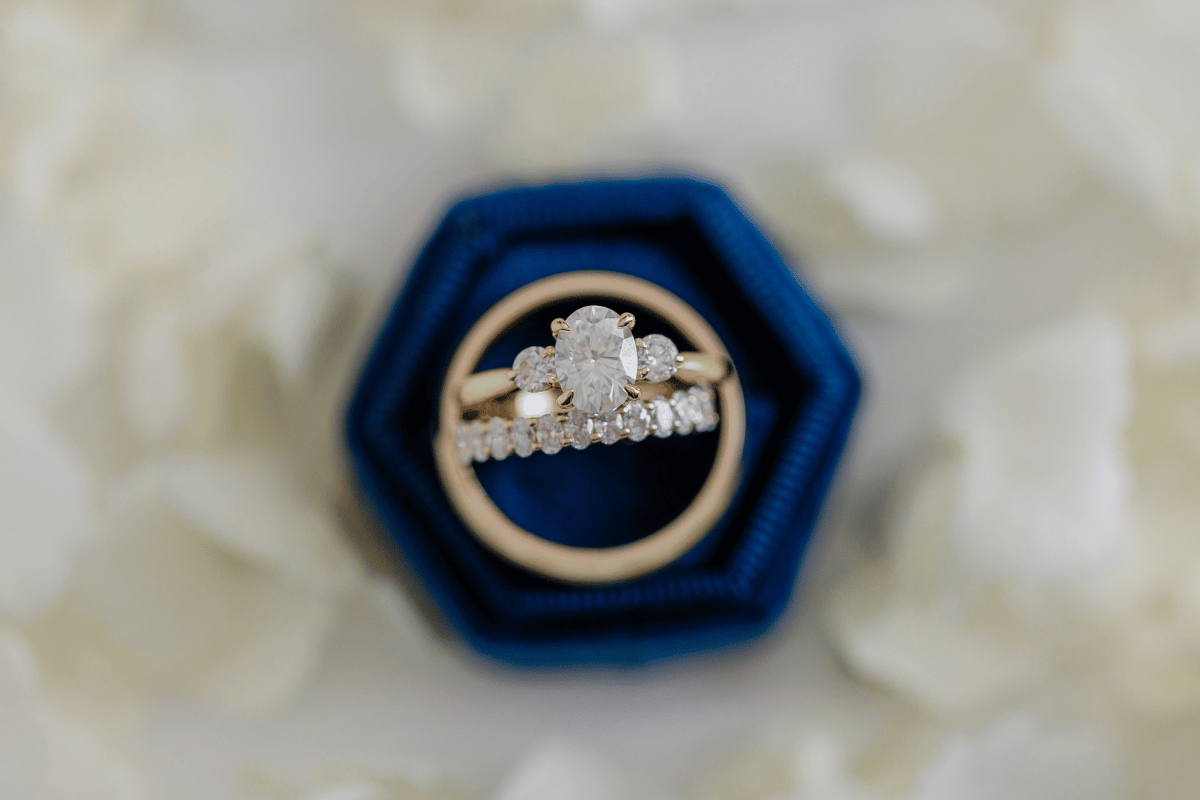The Difference Between Engagement Rings & Wedding Bands
She said "YES!"... But now what?
The sparkling "YES" has been uttered, the celebratory tears have been cried (and dried), and some new questions arise: What's the difference between an engagement ring and a wedding band? Do I need both? Who wears which? While both adorn the left ring finger, their purposes, styles, and traditions differ significantly. A common misconception is that an engagement ring might only be worn during the “engagement” period; however, an engagement ring is worn for a lifetime and is later complimented by the wedding band. Let's delve into the world of the differences between these symbolic circles of love, helping you navigate this exciting (and sometimes confusing) chapter!
A Promise and a Pact: The Meaning Behind Each Ring
The Engagement Ring: A Beacon of "Soon to Be"
An engagement ring signifies a couple's commitment to marry. It's a symbol of a promise, a declaration to the world that you've found your forever person and are embarking on the journey to wedded bliss. Traditionally presented during a proposal, the ring is worn throughout the engagement period, a constant reminder of the exciting future that awaits.
The Wedding Band: A Symbol of Everlasting Love
Wedding bands (also known as wedding rings), on the other hand, represent the official act of making that promise a reality. Exchanged during the wedding ceremony, they mark the beautiful beginning of your marriage. Both partners typically wear wedding bands, symbolizing the equality and oneness within the union. It's a constant reminder, not just to the world, but to yourselves, of the vows promised and the love you share.

Standing Out or Blending In: Design Differences
Engagement Rings: The Spotlight Stealer
Engagement rings tend to be more elaborate. They often feature a central gemstone, most popularly a diamond, though other precious stones like moissanites, sapphires, or emeralds are gaining traction. The setting can be intricate, with halos, pavé diamonds, or unique prongs adding to the ring's brilliance. The overall design often makes an eye-catching statement, reflecting the wearer's personality and style and showcasing the thought put into crafting the perfect ring.
Wedding Bands: Understated Elegance
Wedding bands prioritize comfort and practicality for everyday wear. They are typically simpler in design, featuring a plain metal band (often platinum, yellow/white/rose gold, or tungsten carbide) or a band with subtle detailing. Some wedding bands incorporate small diamonds or gemstones, but these tend to be more minimalist compared to engagement rings.
There's also a growing trend towards "matching sets," where the wedding band is designed to compliment the engagement ring, allowing them to seamlessly stack together. Many couples also like to design coordinating wedding bands that feature the same metal colors or design elements.

Who, What, When, Where, Why: The Exchange of Rings
Engagement Rings: A Solo Presentation
The moment they’ve been waiting for! The engagement ring takes center stage during a proposal, a typically romantic gesture initiated by one partner (though some couples choose a collaborative approach). The ring is presented in a special moment, often accompanied by heartfelt words and a down-on-one knee kind of vibe.
Wedding Bands: A Shared Ceremony
Wedding bands get their moment to shine during the wedding ceremony, typically after the vows have been exchanged. This signifies the official start of the marriage and the commitment both partners make to each other. It's a beautiful exchange that cements your union in the presence of loved ones. For women, the wedding band and engagement ring are worn on the same finger typically with the wedding band worn on the bottom (since it is closest to your heart) and the engagement ring worn on top. Since men typically only wear one wedding band, they also wear it on their left-hand ring finger.

Where to Splurge or Save: The Price Point
Engagement Rings: A Significant Investment
Engagement rings often come with a heftier price tag. This reflects the intricate design, the center stone (especially a diamond), and the symbolic value it holds as a representation of a promise for a future together. The center stone typically drives the price of an engagement ring so it is always wise to invest in that while the setting can be changed over the years if you choose!
Wedding Bands: More Flexible Options
Wedding bands offer more flexibility when it comes to cost. The simpler designs and variety of materials available nowadays allow couples to find a band that suits their style and budget. There's no pressure to break the bank, and some couples even choose to wear alternative bands made from wood, silicone, or even opt for permanent tattoos! It is also important to note that as the band’s thickness, width, and size increase, so does the cost. This is because the amount of precious metal used in the ring determines the weight, which dictates the price.

Beyond Tradition: Modern Twists on the Rings
Engagement Rings: Breaking the Mold
Modern couples are rewriting the engagement ring rulebook. Some opt for alternative gemstones like moissanite or morganite, while others choose a more unique setting like rose gold or geometric shapes. Lab-grown diamonds are also gaining popularity, offering an ethical and more affordable option.
Wedding Bands: Embracing Individuality
Wedding bands are embracing personalization more than ever. Couples choose bands with engravings, unique metals, or even mismatched styles that reflect their individuality.

The Final Say: Choosing the Perfect Rings
There's no right or wrong answer when it comes to engagement and wedding rings. The most important thing is to choose rings that hold meaning for you as a couple. Consider your budget, personal style, and the symbolism each ring represents.
Here are some additional tips:
- Communicate! Talk openly about your expectations and style preferences.
- Do your research! Explore different styles and materials before making a decision.
- Consider pre-loved options! Utilize family heirlooms by resetting the stones into a new band or repurposing the bands of family members.
- Most importantly, have fun! Choosing your rings should be a joyful and exciting experience that reflects the love you share.
So, there you have it! With a clear understanding of how engagement rings and wedding bands differ, you’ll be ready to show them off with knowledge, pride, and joy! If you're ready to talk engagement rings and wedding bands, get started with a free quote today!
Check out these other resources published by Faithful Platform to learn more:



